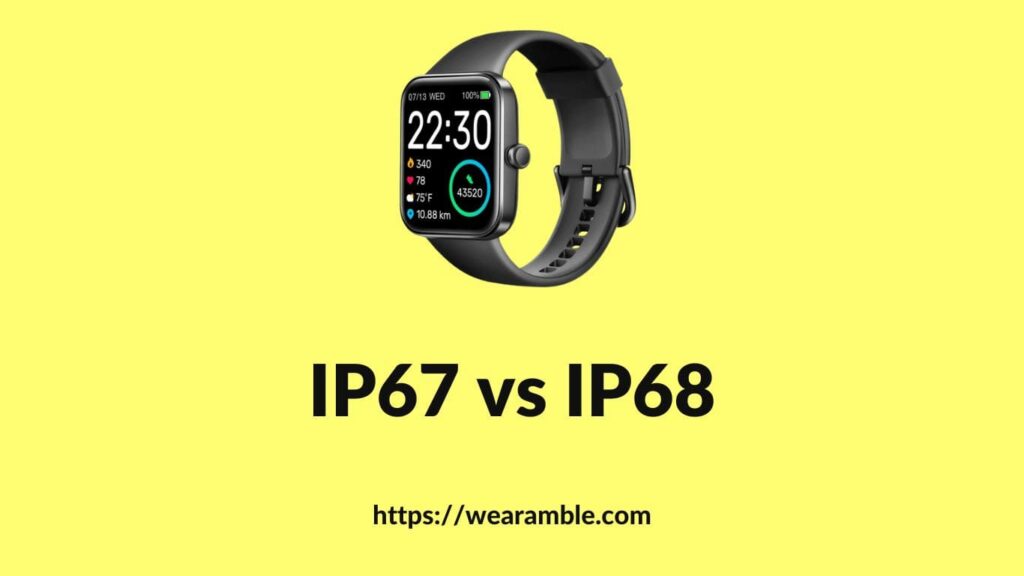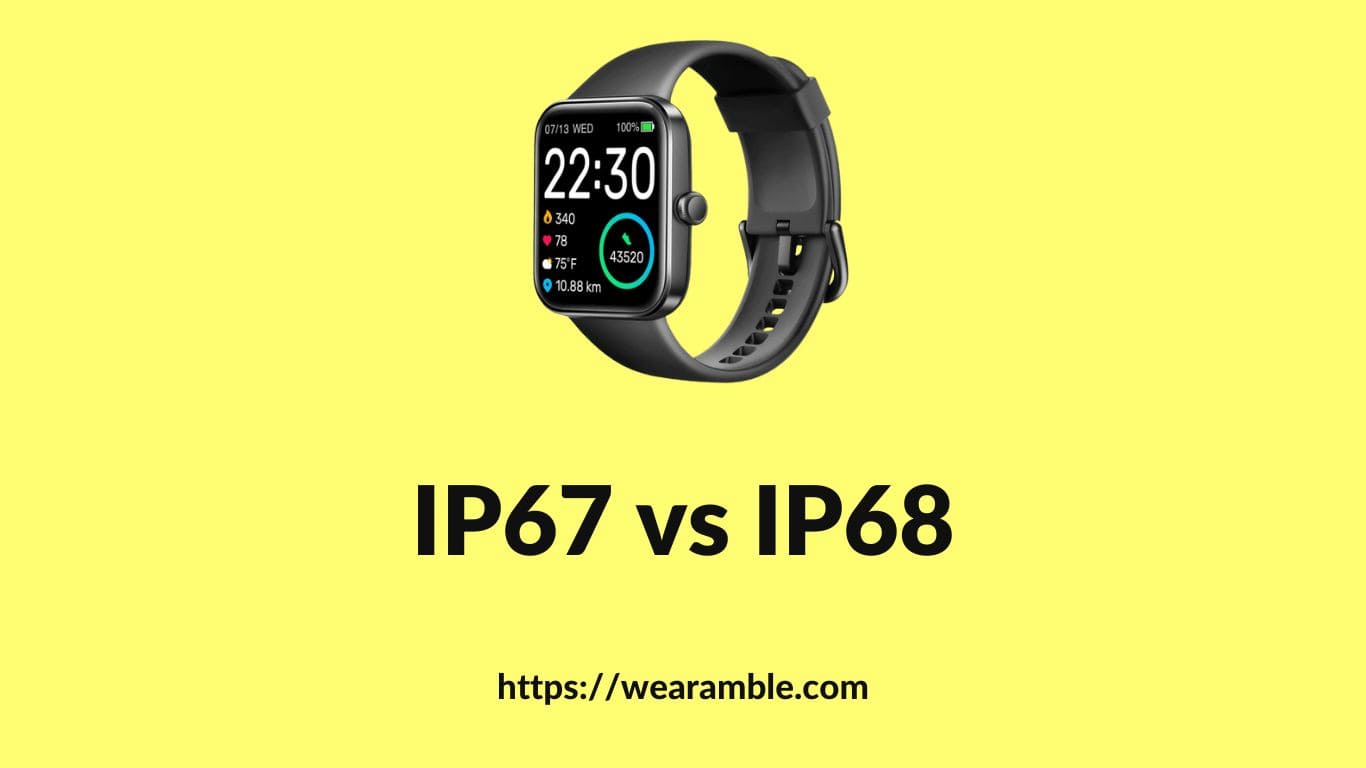For the tech-savvy buyers, choosing electronic devices that can withstand environmental factors like water and dust exposure becomes a priority. This is where understanding the IP (Ingress Protection) ratings, specifically IP67 and IP68, comes into play. These IP codes serve as a definitive guide to the level of protection a device offers.
Whether you’re the adventurous type diving into aquatic activities or someone who’s had one too many accidents with water, knowing the difference between IP67 and IP68 can help you make an informed decision.
After all, when investing in a smartphone, earphone, or any wearable, the IP rating provides an assurance of its durability. But what exactly sets IP67 apart from IP68? This guide delves into these enclosure ratings, offering clarity for those seeking water-resistant or even waterproof electronic and electrical device enclosures.
IP67 Vs IP68
Diving into the specifics, IP67-rated devices are designed to resist submersion in a body of water up to one meter deep for half an hour. This means if you accidentally drop your IP67 device in a pool, it should emerge unscathed if retrieved within 30 minutes. On the other hand, IP68 takes protection a notch higher. Devices with this rating can be submerged in fresh water up to 1.5 meters deep, again for half an hour. While both ratings ensure protection against dust, the differences in their water resistance capabilities are evident. Essentially, if you’re around bodies of water frequently or are simply prone to accidents, understanding these differences becomes paramount.
What is an IP rating?
An IP rating, standing for “Ingress Protection” or “International Protection” Code, is a standardized certification that indicates the degree of protection a product offers against solid objects and liquids.
Defined by the IEC standard 60529, the rating consists of two numbers. The first digit represents protection against solid objects, like dust, with 6 being the highest, indicating complete dust resistance.
The second digit denotes protection against liquids, with 8 signifying the ability to withstand prolonged submersion in water. For instance, a device with an IP67 rating is completely dust-tight and can be submerged in water up to 1 meter for 30 minutes without damage. IP ratings are crucial for consumers to understand a product’s resilience against environmental factors.
What is IP67?
IP67 is an international standard that signifies a device’s protection level against water and dust. The “IP” stands for Ingress Protection, with the number “6” indicating the device’s complete protection against dust, ensuring no particles can penetrate its interior.
Furthermore, the “7” denotes that the device can withstand immersion in water up to a depth of 1 meter (approximately 3.3 feet) for a maximum of 30 minutes without any damage.
When we talk about IP67, we refer to a device’s ability to resist both water and dust. This international standard, represented by the Ingress Protection code, ensures that no dust particles can penetrate the device’s interior.
Moreover, devices with this rating can be immersed in water up to 1 meter (or 3.3 feet) for up to 30 minutes without incurring damage.
What is IP68?
IP68 is another commonly found rating on devices. While it shares similarities with IP67 in terms of dust resistance, it offers enhanced water resistance. Devices with an IP68 rating provide the same level of dust protection as IP67 but can be submerged in water beyond 1 meter (approximately 3.3 feet) for an extended period.
The exact depth and duration of this submersion are typically specified by the manufacturer and may vary depending on the device.
Devices with an IP68 rating are a step ahead in terms of water resistance compared to IP67 devices. While both offer excellent dust resistance, IP68 devices can be submerged in water beyond 1 meter (or 3.3 feet) for an extended period.
However, it’s essential to note that the exact depth and duration for submersion are often determined by the manufacturer, making it crucial to check the device’s specifications.
What IP67 and IP68 Have in Common:
- Dust Protection: Both IP67 and IP68 offer complete protection against dust and other flying particulates, ensuring that no particles can penetrate the device’s interior.
- Accidental Contact: They provide full protection against accidental contact by workers, preventing damage from small objects or inadvertent touches.
- Water Resistance: Both ratings guarantee protection against various forms of water exposure, including dripping, spraying, and splashing.
- Pressurized Water Jets: Devices with these ratings can withstand the force of pressurized water jets without incurring damage.
- Submersion: Both IP67 and IP68 ensure protection against submersion in water up to a depth of 1 meter for a duration of up to 30 minutes.
IP67 vs. IP68: Key Differences:
When it comes to understanding the nuances of water and dust resistance in electrical devices, the IP (Ingress Protection) ratings, set by the International Electrotechnical Commission (IEC), play a pivotal role.
IP67 and IP68 are two such ratings that often pop up, especially in the context of smartphones and smartwatches. Let’s delve into the distinctions between these two standards.
Water Resistance:
Devices with an IP67 rating are designed to resist submersion in water up to a depth of 1 meter (approximately 3.3 feet) for 30 minutes. On the other hand, IP68-rated devices boast superior water resistance, capable of withstanding submersion beyond 1 meter for an extended duration.
However, the exact depth and length of time can vary based on manufacturer specifications. For instance, while some IP68 rated smartphones might be resistant up to 1.5 meters, heavy-duty custom marine enclosures might endure depths of 3 meters or more.
It’s crucial to note that “waterproof” and “water-resistant” are not synonymous. A waterproof product is entirely impervious to water, regardless of the duration of submersion.
In contrast, water-resistant products can prevent water ingress to a certain extent but not entirely. Most smartphones and smartwatches fall under the water-resistant category, meaning they cannot remain submerged indefinitely.
Dust Resistance
Both IP67 and IP68 ratings guarantee complete protection against dust and particles, ensuring that these contaminants cannot infiltrate the device’s interior. The “6” in both ratings signifies that the device is impervious to harmful dust and dirt even after eight hours of direct contact.
Choose the Right Rating
When it comes to safeguarding your electronic devices from potential hazards like water and dust, understanding the IP (Ingress Protection) ratings is paramount. Selecting the appropriate rating is not just about the numbers but about aligning with your specific needs and usage requirements.
For those who are mainly concerned about accidental water exposure, like the occasional splash or light rain, an IP67-rated device is apt. However, if you’re someone who might expose their device to extreme conditions, such as underwater adventures or prolonged immersion, an IP68-rated device is the way to go.
While both IP67 and IP68 promise high levels of water and dust resistance, it’s essential to note that they don’t provide an absolute guarantee of waterproofing. Other factors, like impact or extreme temperatures, might still pose a threat, so always consider the full range of protection you might need.
Do I Need an IP67 or IP68 Enclosure?
When it comes to standard outdoor applications, the choice between IP67 and IP68 enclosures can be a bit nuanced. If there’s a possibility your device might be submerged for an extended duration or at a depth greater than 1 meter, an IP68 enclosure is the safer bet.
On the other hand, if prolonged submersion isn’t a concern, an IP67 enclosure might serve as a less expensive option.
For specific scenarios like marine applications, where equipment in shipyards, vessels, or oil drilling rigs might spend considerable time underwater, the superior resistance of an IP68 enclosure is crucial.
This is especially true for scientific equipment that might be submerged for extended periods, like sensors in floodplains.
When choosing between IP67 and IP68, always consider the exact specifications to ensure suitability. And if you’re ever in doubt, experts like those at Polycase can guide you through their vast selection of waterproof enclosures to find the perfect fit.
IP67 vs IP68: Can I swim with my smartphone?
While the allure of capturing underwater moments with your smartphone might be tempting, it’s crucial to understand the limitations of IP ratings. We’d not recommend swimming with your phone. The IEC tests for these ratings are conducted under controlled lab conditions with the smartphone in standby mode.
Real-world scenarios, like a swimming pool filled with chemicals or the salty expanse of the ocean, present challenges not accounted for in these tests. Back in 2015, Sony’s promotional images showcased an IP68-certified Xperia handset being used underwater.
However, following reports of damage, they revised their stance, advising against such use. The key takeaway? Always be cautious and understand the boundaries of your device’s IP rating before taking that plunge.
Frequently Asked Questions (FAQ):
Can an IP67-rated device be submerged in water?
When considering the IP67 rating, it’s essential to understand its implications for water exposure. An IP67-rated device is designed to be submerged in water to a depth of approximately 1 meter, which is roughly 3.3 feet.
However, it’s crucial to note that this submersion should not exceed 30 minutes. Beyond this duration, the device might not be capable of sustaining its integrity and could potentially suffer damage.
In the realm of electronic devices, the IP67 rating offers a significant level of protection against accidental water encounters. Whether it’s a brief dip in a pool or an unexpected splash, devices with this rating can handle such situations without compromising their functionality.
But always remember, while they can endure short-term immersion, they aren’t designed for prolonged underwater activities.
Are IP67 and IP68 devices completely waterproof?
Distinguishing between water resistance and complete waterproofing is vital when discussing IP67 and IP68 ratings. Both these ratings signify a device’s ability to resist water immersion to varying degrees.
While IP67 ensures protection up to a depth of 1 meter for 30 minutes, IP68 takes it a notch higher, allowing submersion beyond that depth for extended periods, typically specified by the manufacturer.
However, it’s essential to approach these ratings with a clear understanding. Neither IP67 nor IP68 guarantees that a device is entirely impervious to water under all conditions.
They offer significant protection, but it’s always recommended to check the manufacturer’s specifications and conditions to ensure the device’s safety in specific scenarios.
Are all smartphones and electronic devices IP67 or IP68-rated?
In the vast landscape of smartphones and electronic devices, not all come with IP67 or IP68 ratings. The presence of an IP rating largely depends on the manufacturer’s design intentions and the intended usage of the device. While some devices are crafted to withstand challenging environments, others might not prioritize such features.
When considering a purchase, it’s always a good practice to delve into the specifications and marketing materials provided by the manufacturer.
This information will shed light on the specific device’s capabilities, ensuring you make an informed choice based on your requirements and the device’s resilience against water and dust.
Can an IP67 or IP68-rated device be charged while wet?
Charging an IP67 or IP68-rated device while it’s wet is not recommended. Even though these devices boast significant water resistance, moisture can still find its way into charging ports and connectors.
This moisture can interfere with the proper charging process and, in some cases, might even lead to potential damage.
It’s always advisable to ensure the device, especially the charging ports, is thoroughly dry before initiating the charging process. Taking this precaution not only ensures the device’s longevity but also prevents any unforeseen complications arising from moisture interference. Safety first, always!
Wrapping Up:
As you navigate the world of electronic devices, keeping these ratings in mind will undoubtedly guide your choices. If you have further questions or wish to delve deeper into this topic, feel free to explore the comment section or click here for more insights.
